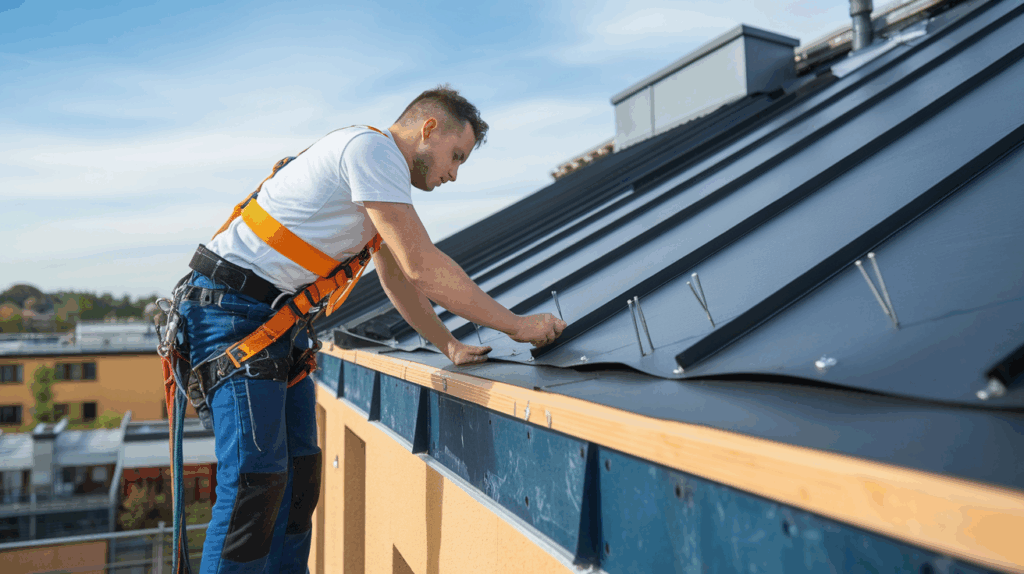Are you unsure which roofing membrane is best for your flat or low-slope roof?
With so many options available, it can be overwhelming to find the right one for your home.
I completely understand how important it is to make the right choice, as the durability and performance of your roof depend on it.
In this blog, I’ll break down the different types of roof membranes, their characteristics, and how to choose the right one for your specific needs.
By the end, you’ll have the knowledge to make an informed decision, knowing exactly what works for your home.
What Is a Roof Membrane?
A roof membrane is a waterproof layer used to protect flat or low-slope roofs from the elements.
It’s a barrier that prevents water from seeping into the structure, keeping your home dry and safe.
When I first started learning about roofing, I found it helpful to think of the membrane as the roof’s first line of defense against weather damage.
Without it, your roof would be much more vulnerable to leaks and other issues.
Why Are Roof Membranes Important?
Roof membranes are important because they offer long-lasting protection, reduce the need for constant repairs, and protect your home from costly water damage.
I’ve seen how a quality membrane can save you time and money in the long run.
In areas with heavy rain or snow, it’s important to have a strong membrane in place to avoid leaks, mold, and other problems that can arise when water gets in.
Having the right roof membrane ensures your roof is durable and helps maintain the overall health of your home.
Main Types of Roof Membranes
Choosing the right roof membrane for your flat or low-slope roof can make a big difference in terms of durability, maintenance, and energy efficiency. Let’s take a look at the most common options available:
1. EPDM (Ethylene Propylene Diene Monomer)
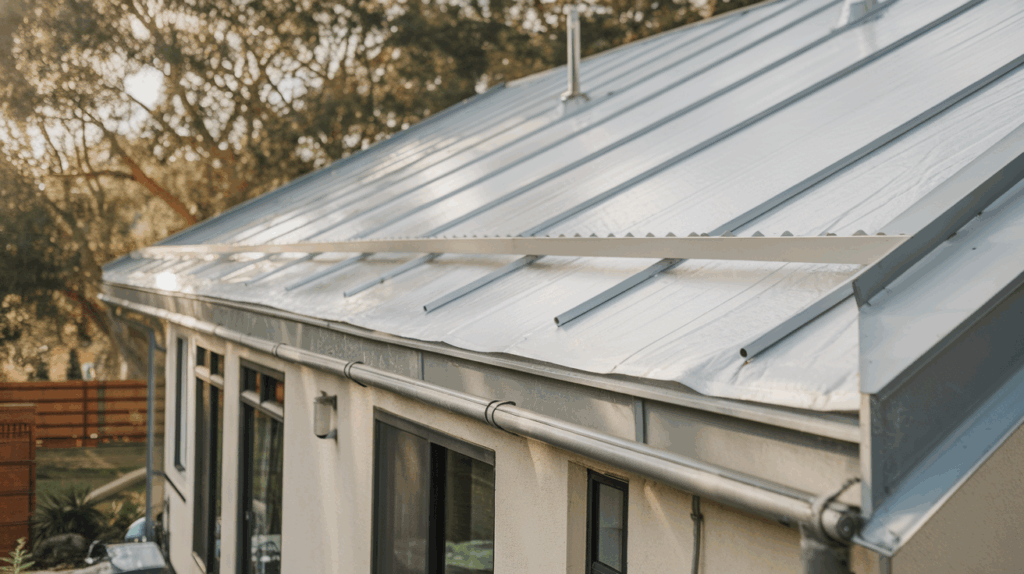
EPDM is a synthetic rubber membrane that’s widely used for flat roofs.
It has a proven track record of lasting over 20 years and is known for its ability to withstand harsh weather conditions, making it a popular choice for homeowners looking for a long-term solution.
Characteristics:
- Durable: EPDM resists UV rays, ozone, and extreme weather, ensuring a long lifespan.
- Flexible: Its rubber-like properties allow it to expand and contract with temperature changes.
- Low Maintenance: Very little upkeep is needed after installation, saving you time and money.
- Installation: It often comes in large sheets with fewer seams, which reduces the chances of leaks.
- Cost-effective: One of the more affordable roofing options for flat roofs.
Suitability: EPDM is best for areas with fluctuating temperatures and homes that experience a lot of extreme weather conditions. If you want a durable, low-maintenance roof that can handle the elements, EPDM is a solid and reliable choice for flat roofs.
2. TPO (Thermoplastic Olefin)
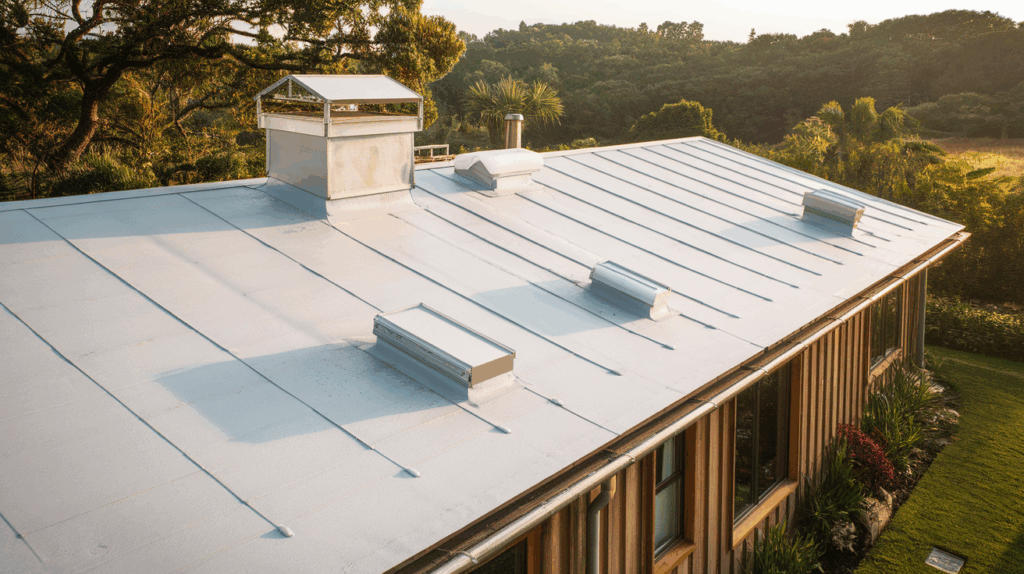
TPO is a single-ply membrane that’s becoming more popular due to its energy-efficient properties. It’s a mix of rubber and plastic, making it both flexible and durable.
I’ve worked with TPO in homes that focus on energy savings, as it has a highly reflective surface that helps reduce cooling costs during hot months.
Characteristics:
- Energy-efficient: Its reflective surface helps reduce the amount of heat absorbed, lowering energy bills.
- UV-resistant: Excellent at resisting damage from the sun, ensuring it won’t break down over time.
- Affordable: Less expensive than other options like PVC, making it a budget-friendly choice.
- Easy to install: TPO membranes come in large rolls, which makes installation quicker and more straightforward.
- Environmentally friendly: Many TPO products are made from recyclable materials.
Suitability: TPO is great for homes in warmer climates or if you’re looking for a roofing material that helps lower energy costs. It works well for low-slope roofs where the reflective properties can be fully utilized. If you care about the environment and want an energy-efficient solution, TPO is a smart option.
3. PVC (Polyvinyl Chloride)
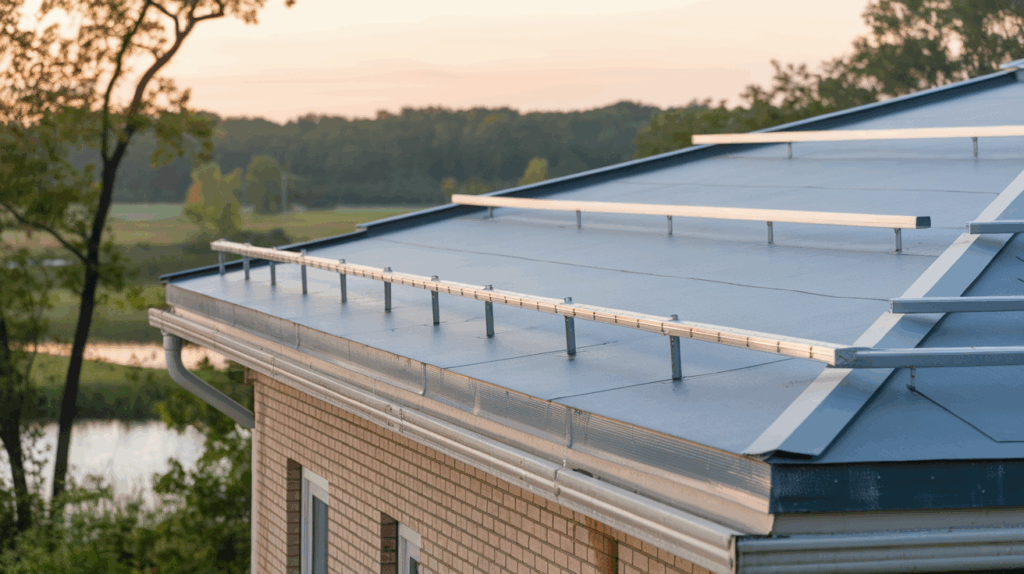
PVC membranes are known for their strength and resistance to a variety of harsh conditions.
While it’s more expensive than options like TPO and EPDM, the added durability and resistance to chemicals, grease, and fire make it a popular choice for both residential and commercial buildings.
Characteristics:
- Strong and durable: Highly resistant to punctures and tears, making it ideal for roofs with foot traffic or potential wear and tear.
- Fire-resistant: PVC is known for being fire-resistant, adding an extra layer of protection to your home.
- Chemical resistance: Works well in areas where exposure to oils, grease, or chemicals is common.
- Long-lasting: PVC membranes have a long lifespan, typically lasting 20+ years.
- Maintenance: Requires minimal maintenance once installed, but it can be more expensive upfront.
Suitability: If your roof will be exposed to harsh chemicals or extreme conditions, PVC is a great option. It’s also ideal for low-slope roofs where durability and fire-resistance are priorities. If you’re willing to invest a little more for long-term protection, PVC is a strong choice.
4. Modified Bitumen
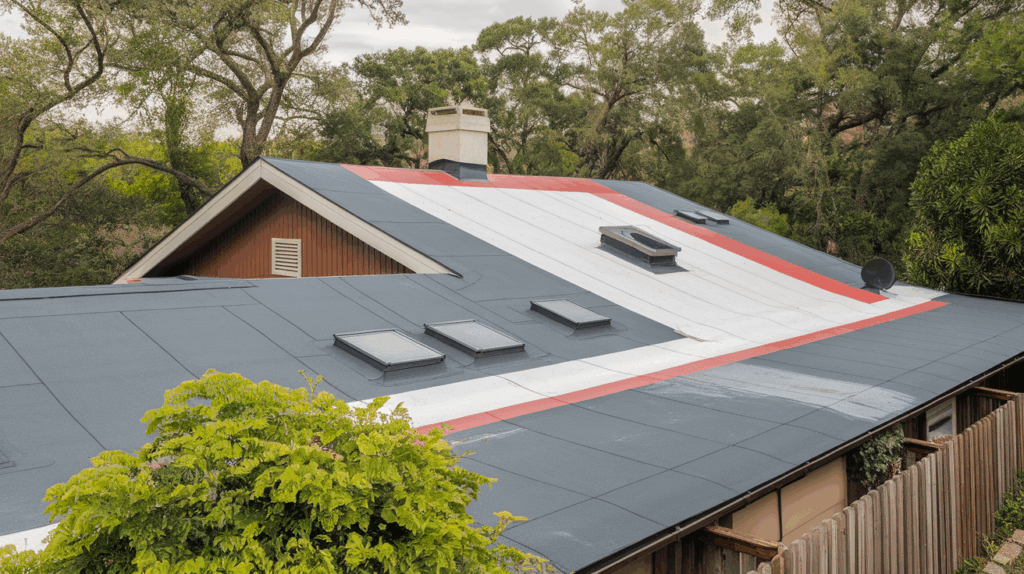
Modified bitumen is a more traditional roofing option made from asphalt that’s been modified to improve its flexibility and durability.
It’s often applied in multiple layers and is a reliable choice for low-slope roofs. I’ve found modified bitumen to be especially useful in homes where the roofing material needs to withstand extreme weather.
Characteristics:
- Weather-resistant: Handles both extreme heat and cold without cracking or becoming brittle.
- Flexible: The modified bitumen makes the membrane more flexible, so it can expand and contract with temperature changes.
- Easy to install: Can be applied using heat or adhesives, which makes it suitable for DIY projects as well as professional installations.
- Durable: Provides long-lasting protection and is resistant to UV rays and water.
- Cost-effective: Compared to some other roofing options, it’s relatively affordable.
Suitability: Modified Bitumen works well for homeowners looking for a traditional, durable roof material. It’s especially suited for low-slope roofs and homes in areas with extreme weather conditions.
5. Built-Up Roofing (BUR)
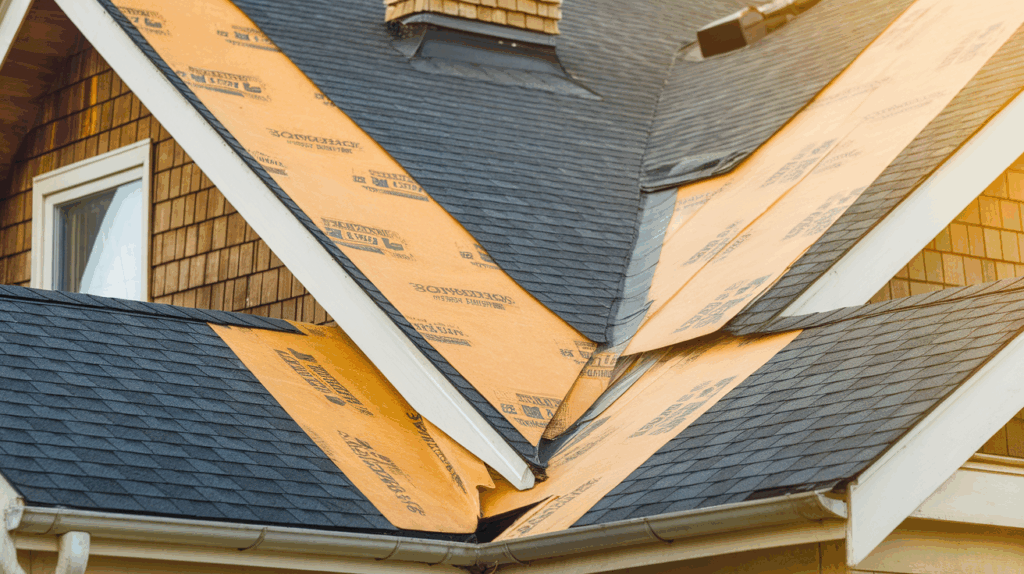
BUR is a layered roofing system made from alternating layers of asphalt and felt. Often referred to as “tar and gravel” roofs, BUR systems are known for their durability and insulation properties.
I’ve seen BUR used in commercial buildings, but it can also be a great choice for residential homes that need a robust, long-lasting roofing solution.
Characteristics:
- Heavy-duty: Provides excellent protection against water and the elements with its multiple layers.
- Insulating: The layers provide insulation, which can be beneficial for homes in areas with extreme temperatures.
- Long-lasting: Built-Up Roofing can last a long time, often 20 years or more, with proper maintenance.
- Requires professional installation: Installation can be more involved than other roofing options, as it requires applying multiple layers of materials.
Suitability: BUR is ideal for homes that need a highly durable roofing system, especially in areas with extreme weather. It works well for flat roofs but is heavier than other options, so you’ll need to ensure your roof can handle the added weight.
How to Choose the Right Roof Membrane for Your Home
Choosing the right roof membrane depends on your unique needs. If energy efficiency is a priority, TPO might be the best option.
For maximum durability and resistance to chemicals or fire, PVC may be a better fit.
From my experience, understanding your home’s climate, usage, and budget is essential in making the right decision.
Each membrane has its own advantages, and selecting the right one ensures long-term protection for your roof.
Roof Membrane Installation Cost
The cost of installing a roof membrane primarily depends on the type of material you choose. Let’s take a look at the material costs you can expect for each type of membrane:
| Roof Membrane Type | Cost per Square Foot |
| EPDM | $4.25 to $14.50 |
| TPO | $5.50 to $13.50 |
| PVC | $8.50 to $14.50 |
| Modified Bitumen | $2.50 to $4.50 |
| Built-Up Roofing (BUR) | $2.50 to $4.00 |
The material cost can vary depending on factors like quality, thickness, and supplier.
From my experience, higher-end options like PVC or TPO tend to be more expensive, but offer benefits such as longer lifespans or energy efficiency.
Conclusion
By now, I hope you have a clearer understanding of the different types of roof membranes and their material costs.
If you’re looking for durability, energy efficiency, or a more budget-friendly option, this guide has provided the insights you need to make the best choice for your flat or low-slope roof.
I know choosing the right roofing material can be overwhelming, especially with so many options out there, but I trust this guide about costs and characteristics has helped you narrow down your decision.
Each membrane has its strengths, and finding the one that fits your specific needs, while staying within your budget, will ensure a long-lasting and protective roof.

